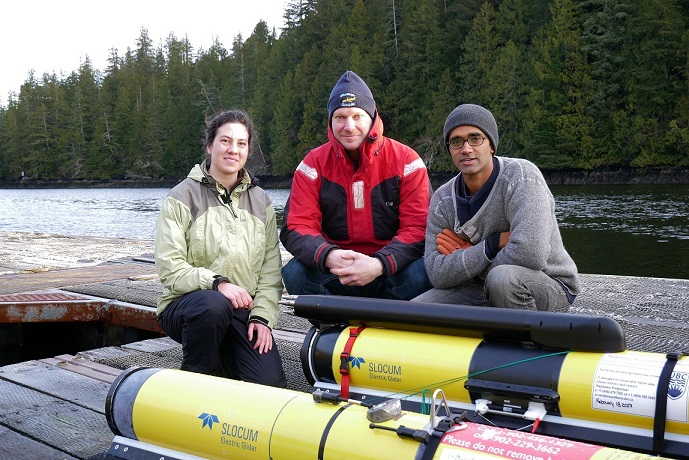Ocean gliders to study turbulence and whale habitat in Clayoquot Canyon

Autonomous instrument platforms are revolutionizing how we can observe the ocean. Recently a small fleet of gliders, low power underwater drone-like platforms, have been used to pioneer research in oceanography and ecology by collecting substantial new data for a multifaceted research project to help understand whale habitat, food sources, and the physical ocean processes that influence them. The purpose of the project is to identify and characterize whale habitat to mitigate the risk of ship strikes in Canadian coastal waters.
Participating in this research is Stephanie Waterman’s ocean glider group in EOAS, in collaboration with scientists from University of Victoria, Dalhousie University, Institute of Ocean Sciences, Ocean Networks Canada, and the Ocean Tracking Network. Together they deployed three autonomous underwater gliders in Clayoquot Canyon off the West coast of Vancouver Island in February 2017. This initiative is a part of the Marine Environmental Observation Prediction and Response (MEOPAR) Network’s Whale Habitat and Listening Experiment (WHaLE) project.
Submarine canyons, which are prevalent in this region, are known biological hotspots and feeding grounds for whales. Tara Howatt, a UBC PhD student working on the project, is examining oceanographic processes to understand why. The UBC glider was equipped with a turbulence profiler, which will be used to examine the relationship between zooplankton aggregations and oceanic turbulence. This unique data set is bridging gaps between physical and biological oceanography.
More information about the collaborative glider mission can be found in this news article: http://www.cbc.ca/news/canada/british-columbia/underwater-robots-map-grey-whale-habitat-off-vancouver-island-1.4013947
Pictured below from left to right: Tara Howatt (PhD student), Chris Payne (sea-going technician), and Benjamin Scheifele (PhD student)
